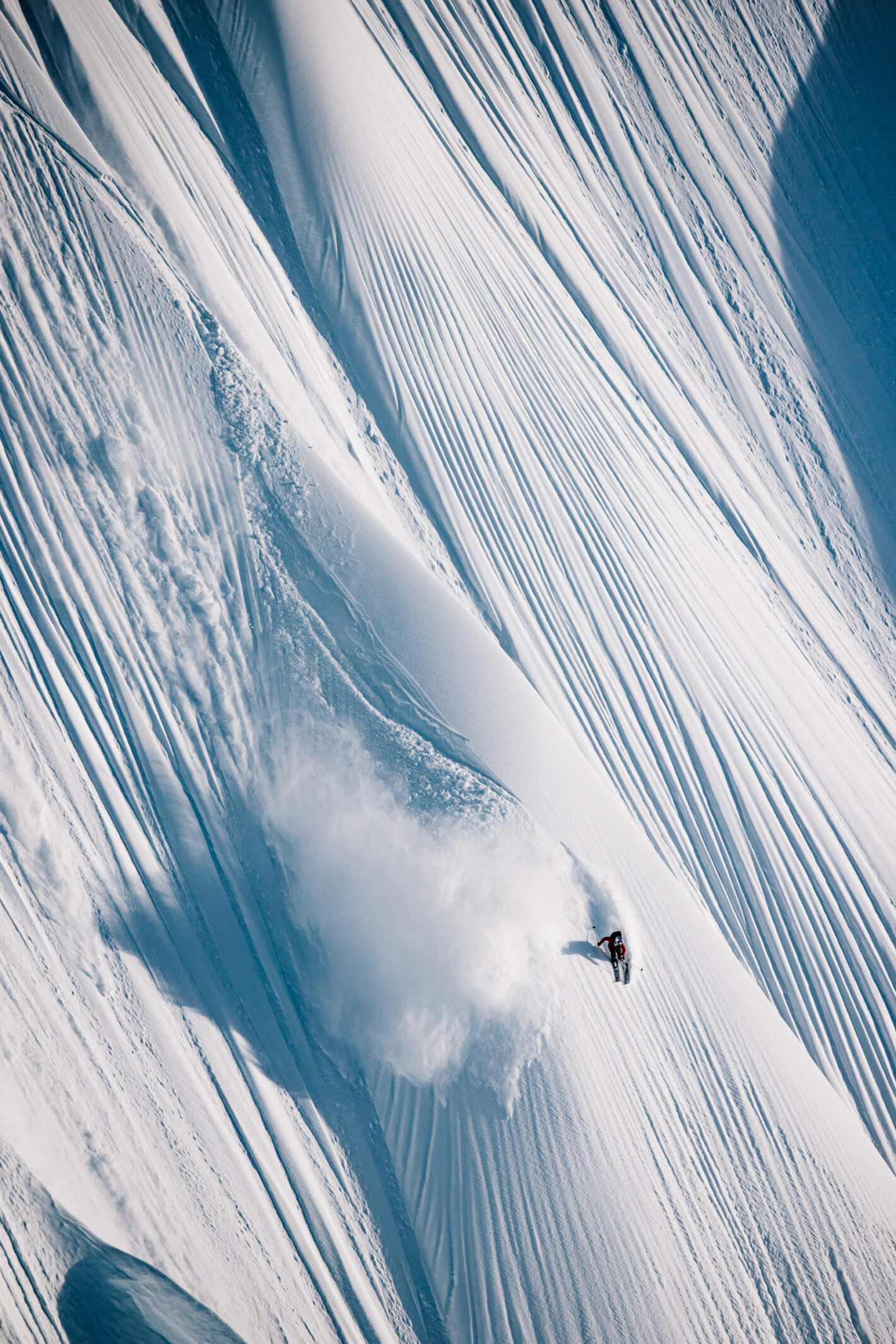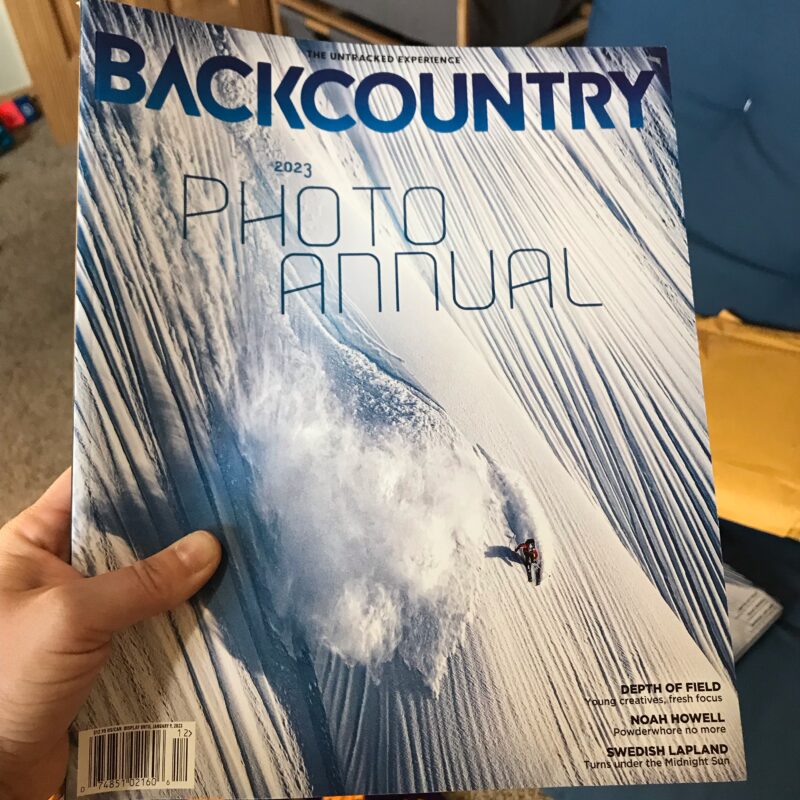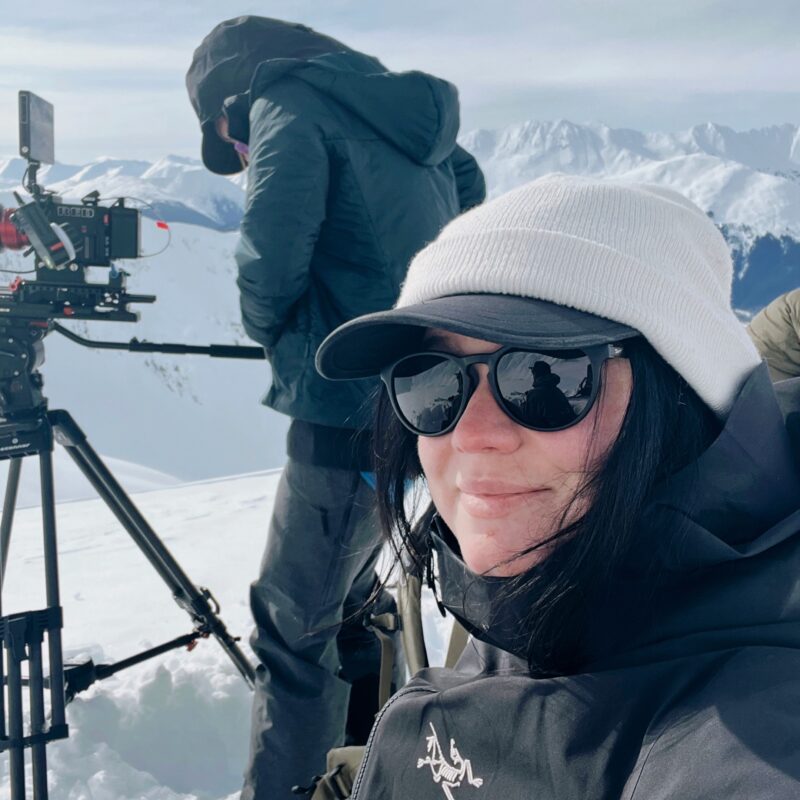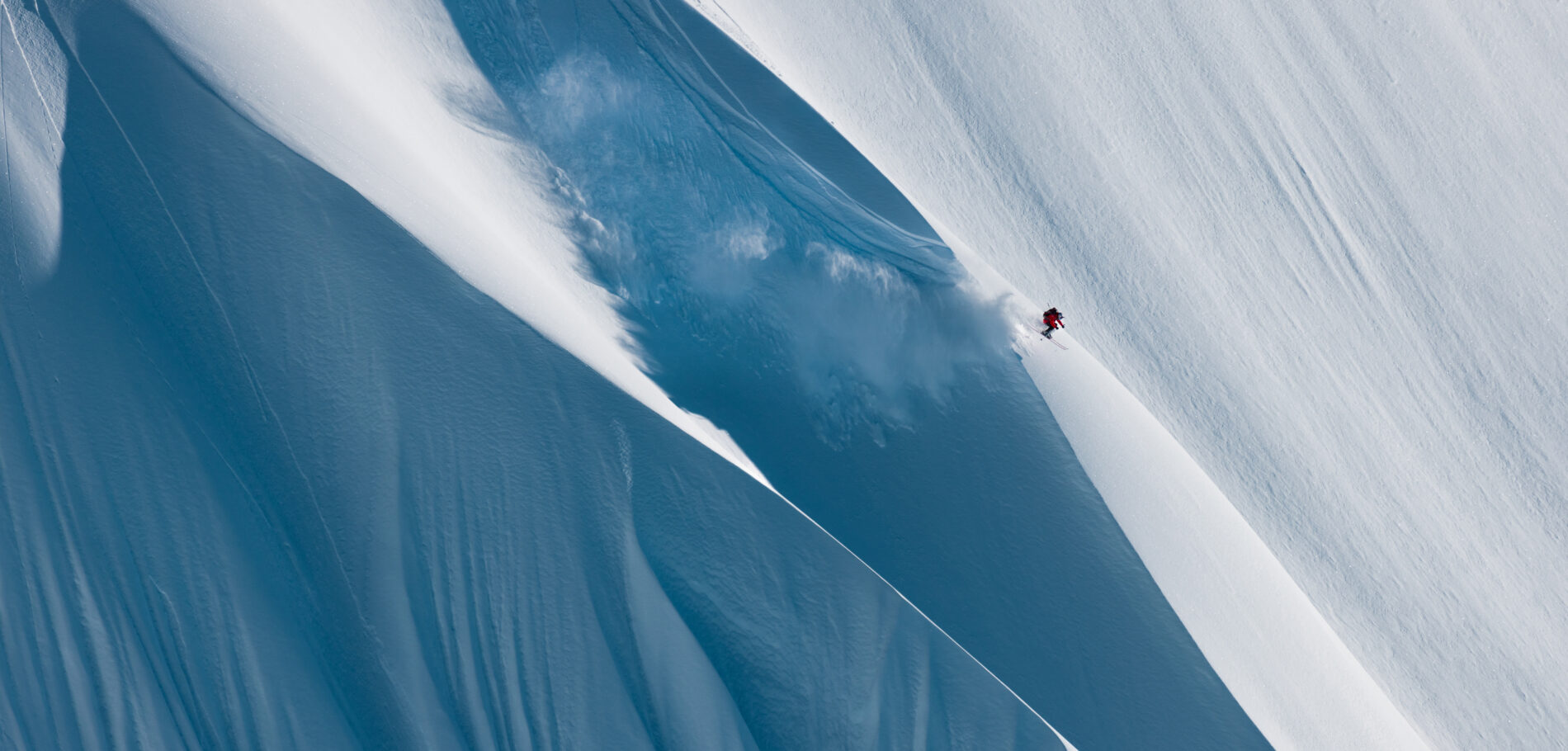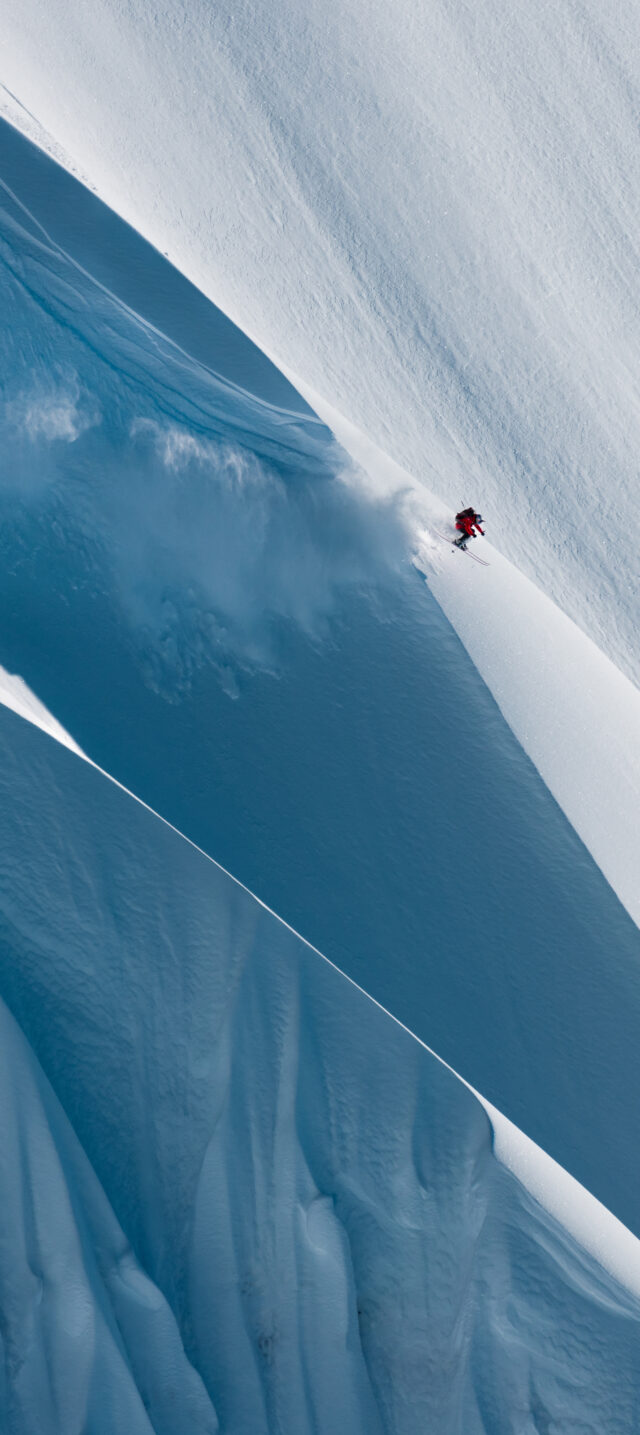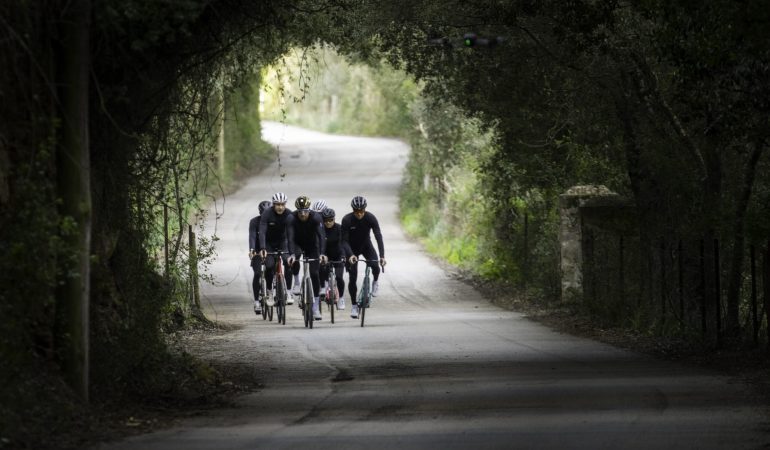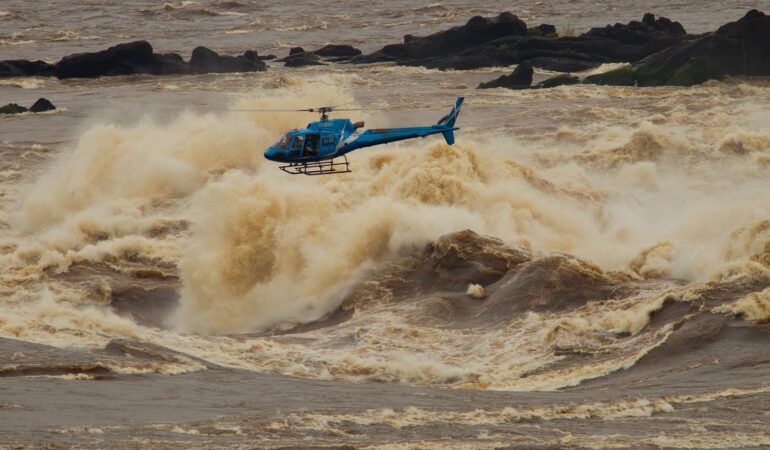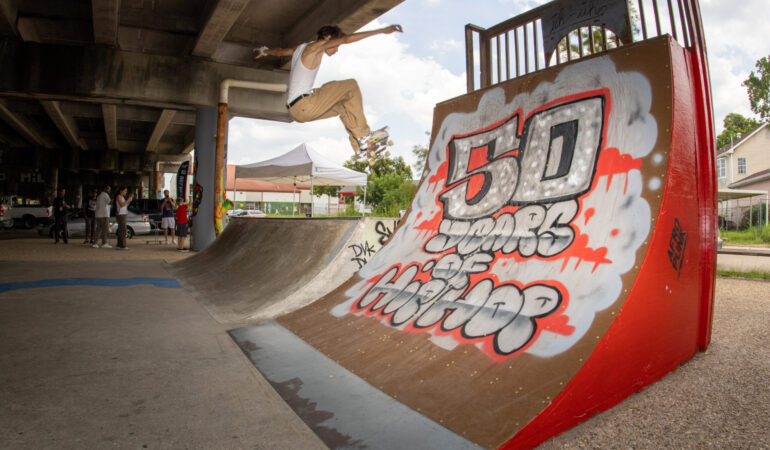I’m not sure if I mentioned it to anyone at first, but flying with Chugach Powder Guides was my first time in a helicopter. I was very nervous, but I didn’t want to make a show of it. Exposure is something I get really timid around, ironically. I was out there for a project that I had produced and was directing, so I really had to fight down my nerves on day one. We had a top-tier crew of cinematographers, and I trust my own shooting abilities—so I wasn’t worried about getting the shot. Once I actually started shooting, the nerves went down significantly. By the end of the trip, I had gotten over my nerves and was ready to spend more time shooting in that environment. I’ve been trying to go back to Alaska ever since.”
In the Field: How They Got The Shot | The “Nexus” AK Shoot
We go behind the scenes with the director, cinematographer, and photographer, Shannon Corsi, to get the backstory on one of the most eye-catching big mountain shoots of recent times.
Lifting the Velvet Curtain on “Nexus”
It’s 2020—the nadir of the pandemic—and the director Shannon Corsi is texting with cinematographer Sophie Danison and photographer Katie Lozancich. Shannon has lived the snowboard bum life in Big Sky, Montana. She’s attended all the premieres rolling through town. She’s loved the all-women ski films she’s watched since her ski shop days, but she wants to see more women athletes, as do Danison and Lozancich. She’s creatively restless. “We should just go for it,” she texts.
A few weeks later, the threesome meet up at Grand Teton Brewing to make a plan. In the weeks that follow, they start reaching out to athletes. Michelle Parker, Brooklyn Bell, and nine more are in without hesitation. In fact, they don’t get a single rejection, which is unheard of with athlete recruiting.
The chase for official partners, though, is harder. They pitch close to 100 brands. Thirteen eventually sign on, including Arc’Teryx and Red Bull. The naysayer responses include comments like: “Do you think people would actually be interested in watching this?” To: “No offense, but we have standards.”
Despite the doubters, by the beginning of winter ’21/’22, The “Nexus” team has raised the full target budget—no small feat for Shannon’s first feature-length film.
And then the winter of ’21/’22 hits. Or rather, it doesn’t hit. At location after location in the Lower 48, the snow is spotty at best. The “Nexus” crews scramble to avoid getting skunked. They execute, but each shoot is a battle with the weather. Shannon and the team find themselves praying for good weather for an April segment planned for Girdwood, Alaska with Parker and Bell headlining.
This is how Shannon and the “Nexus” team pull off that marquee Alaska shoot—in Shannon’s words. “Flying up to Alaska, after we checked in like 20 plus bags, I remember all of us sitting in the lounge waiting for our flight and staring tiredly into our mimosa glasses.”
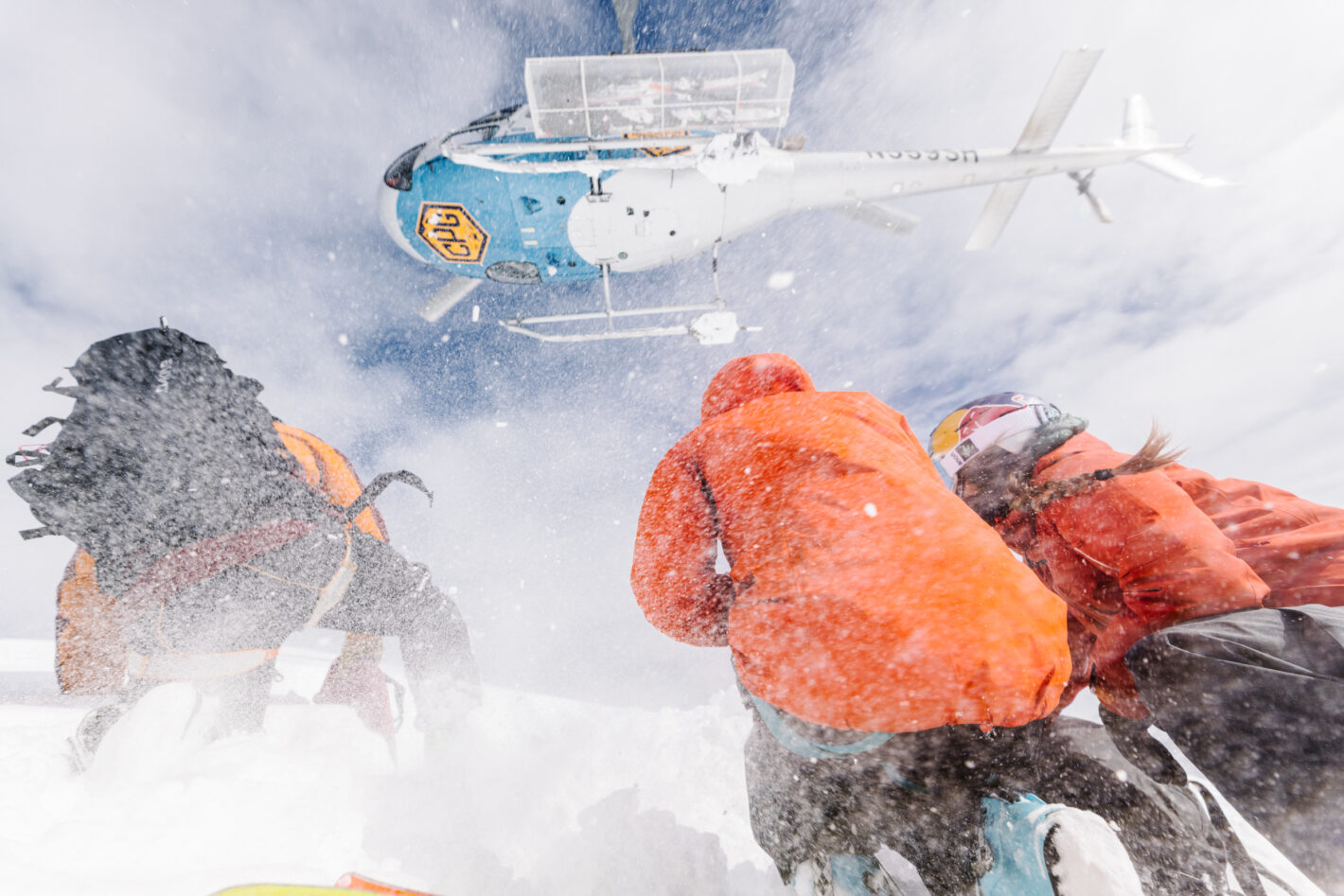

We had a private ship with CPG reserved. They call you every morning at 8:00 and say ‘yes, we’re shooting,’ or ‘no, we’re not shooting, but we’ll stay in contact if the weather changes.’
The first day was for window shopping—which is AK heli-skiing slang for looking for weather windows (blue skies) big enough to fly, ski, and shoot in. When you have days like that, the move is to just send priority crew because you may not have time to shuttle everyone else before the weather window closes. For us, that was guides, athletes, and our drone pilot, Austin Hopkins. He took a RED Komodo on a tripod, and left it locked off while focusing on flying the drone.
The rest of our team is waiting back at the base with ski boots and climbing harnesses on. Just as we’re taking the harnesses off, we got the call. We were jumping into our harnesses.”

Typically your crews get dropped off first. When the athletes get into place they radio when they are ready to drop. So there’s a lot of radio chatter. But in Alaska you’re usually in line of sight. It’s not like you’re shooting in the trees.
The cameras are an extra set of eyes in big terrain like that. If there’s an avalanche you can quickly replay the footage and get a feel for the last point a skier was above the surface. So even though it feels weird as hell, you have to keep filming for safety if there’s a slide or a crash.
At the end of one of the days of filming, our guides let us know that a line called ‘Velvet Curtain’ was skiable right now. The conditions hadn’t lined up for it to be skiable within the last 10 years, but it was firing right then. We went to check it out. It was a massive, steep wall with striated snow. Michelle skied it first, and then Brooklyn followed. Alaska skiing is a whole different beast: You can get caught up in your ‘sluff;’ basically it’s so steep that the loose snow you kick off while skiing can outpace you and take you at the ankles. That happened to Brooklyn, and she went for a ride. That crash was wild—I don’t think anyone would have batted an eye if she was done for the day. Honestly, we expected that. But then we heard Michelle radio at the bottom of the line that Brooklyn wanted to go again. We were stoked.”
There are times when the film crew will call an athlete off a line. But that was not one of those times. She was down.
A few nights later we talked about how most of the time you don’t get a second shot at that stuff. That moment was an important part of the film. The footage from Michelle’s GoPro captured Brooklyn’s spirit. The crash reel made it into the final “Nexus” cut. A photo that Katie Lozancich took that day earned the cover of the 2023 Backcountry magazine Photo Annual.

At the tail end of another productive day of skiing, we’re scouting where to shoot for some of the last lines of the day. I saw a ridge where I knew the light would be perfect, so I asked the guides if it would be safe to shoot from it. We had to do the location justice.
They weren’t sure, so Susie Theis—another star filmmaker and photographer on our team—and I flew over with a guide to check it out, and our pilot landed hard on it a few times to make sure the cornice was stable. It was, but Susie and I got firm instructions: ‘Don’t move from your spot.’
Susie and I got situated with our cameras and we waited for the radio chatter to start. The light was amazing. We were stoked. Both Brooklyn and Michelle crushed their lines—I ended up snapping the Nexus poster cover (hero shot at top of page) from that spot.
At that point I was completely comfortable. We have long lenses. This is the second to the last line of the day. We’re in the flow at this point. I’m excited to be on this ridge, not terrified. We’re here because we made it happen, I thought. And we got amazing footage.”
